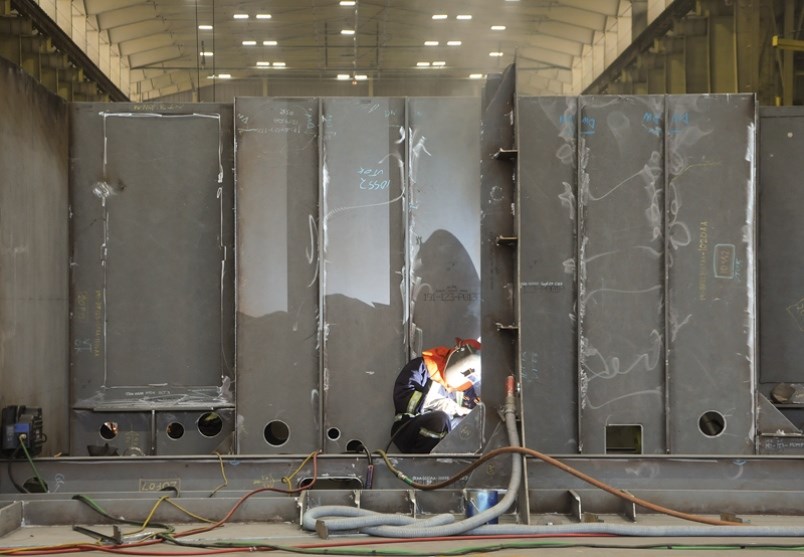Ten months after the launch of the first federal fisheries vessel was applauded during a ceremony at North Vancouver’s Seaspan Shipyards, the company is having to re-weld sections of the hull after defects were discovered.
The defects in the welds were first noticed on the third fisheries vessel, still under construction in the shipyard, by a member of a Coast Guard monitoring team earlier this year.
Subsequent checks found the same problem on all three ships, including the Sir John Franklin, which had already been launched and was undergoing final outfitting at Seaspan’s Victoria Shipyards.
An examination of the hull seam welds with sophisticated equipment on all three ships eventually revealed defects in “approximately four per cent of them,” said Tim Page, vice-president of government relations for Seaspan.
Page acknowledged the federal ships contain a higher number of weld defects than would be typical for a “mature shipyard” – which would be closer to two per cent.
But he added the problem is “not as dramatic as some people describe the issue… .”
Since discovering the problem, the shipyard has hired independent welding experts who narrowed the likely cause to a specific procedure connected to the semi-automatic welding process. That procedure has been scrapped, and the shipyard is now going back and re-welding the hull seams where the defects were found, said Page.
Seaspan is bearing all costs of the repairs, under a fixed-price contract to build the three ships at a budgeted cost of $687 million.
Both the shipyard and the Coast Guard are downplaying the impact of the weld problems.
“We were not overly concerned with the problems,” said Robb Wight, director general of major projects for the Coast Guard. “It’s not uncommon in shipyards to have welding problems.”
Wight said the federal government is satisfied that the shipyard is fixing the problems.
“What we want from the shipyard is a quality ship,” he said. “That’s what we feel we’re getting.”
The Sir John Franklin – originally scheduled to be delivered to the government in the spring of 2017 – is now expected to be delivered by mid-2019.
Page said the welding defects have not been a significant factor in the delay.
But not everyone is happy with the work on the federal shipbuilding program to date.
“It raises a lot of concerns,” said B.C. Conservative MP Todd Doherty, the opposition critic for the Coast Guard. “How did it get through the initial inspection process?”
“I don’t accept that this is normal to have these kinds of issues.”
Doherty also questioned how Seaspan will ever be able to build much larger ships on time, when the first and smallest vessel in the shipbuilding program has taken four years to complete.
Heavily edited documents released under Access to Information indicate delays in shipbuilding combined with decommissioning of aging vessels was already a concern for the Coast Guard more than a year ago, and led to the Department of Fisheries and Oceans paying to charter vessels to continue the science programs on both the east and west coasts in 2017/2018, at a cost of more than $5 million.
Much of the information detailing progress on the ship construction and delays in the schedule was edited out of documents on the grounds that releasing it could harm the competitive position or result in a financial loss to a third party.
Doherty said he’s had trouble getting information, even though he’s on a parliamentary committee where issues connected to the shipbuilding program are supposed to be discussed. “The wagons have been circled and everybody’s closed ranks and nobody’s talking about it,” he said.
North Vancouver MP Jonathan Wilkinson, who is Minister of Fisheries and Oceans, said he doesn’t think the welding problems or the delays to date point to bigger issues.
Wilkinson said the government is happy the problems were found sooner than later.
The bumpy start is part of the process to rebuild the shipbuilding industry, he said.
“We certainly could go to Poland and buy the ship,” he said – but that’s not a plan the government supports.
Building of future ships will be faster and more efficient, said Wilkinson. The second and third fisheries vessels are still under construction at Seaspan, along with construction of “early blocks” for the government’s massive joint support ships.
About 700 tradespeople and 300 office staff currently work at the North Vancouver shipyard.



